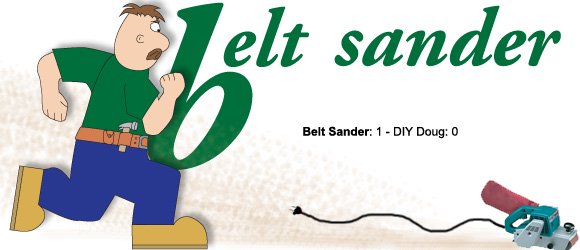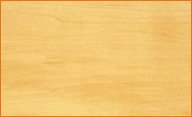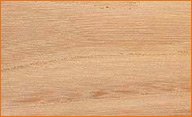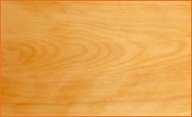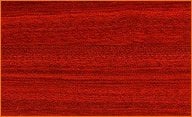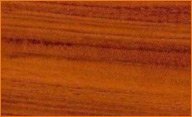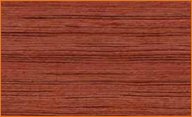| Lumber Glossary Term |
Definition |
| B&S |
Beams and Stringers |
| B/L |
Bill of Lading - A written document issued by a carrier serving as a
receipt of goods and as a contract to deliver goods to a specified
destination. |
| Backcut |
The final cut in felling a tree, made on the opposite side of the direction of fall. |
| Backfire |
A blaze set in front of an advancing forest fire in an effort to check the wildfire by cutting off its fuel supply. |
| Back Saw |
A short rectangular saw with fine teeth and a rigid
“spine” along the top of the blade. A back saw is used for fine joinery
work such as cutting dovetail joints. |
| Balanced Construction |
The symmetrical construction of plywood or
other composites having matching layers on both sides of the central
plane so that changes in moisture content will not cause warp. |
| Baluster |
One of a series of vertical supports used between posts of a railing. This is also called a spindle. |
| Band Saw |
A saw with a looped blade running around two or three
wheels. This is used with narrow blades for cutting freehand shapes, or
with wider blades and a guide for re-sawing material. |
| Band Strength |
The ability of saw blade to resist deflection determined by width & thickness (AKA beam strength). |
| Bare |
Root seedling; tree seedling grown in a nursery bed. When
large enough for transplanting, the seedling is lifted from the nursery
bed, and the dirt is removed from the roots before packaging. |
| Bark |
The outermost, protective layer of a tree composed of dead cork and other various elements. |
| Bark Beetle |
Small, cylindrical beetle of the family Scolytidae, the
adult of which bores into and beneath the bark of various trees for the
purpose of egg laying. |
| Bark Pocket |
An opening between annual growth rings that contains
bark. Bark pockets appear as dark streaks on radial surfaces and as
rounded areas on tangential surfaces. |
| Barker |
A machine used to remove bark from pulpwood. |
| Barking Drum |
A large drum in which logs or billets are tumbled by
mechanical rotation, the back being removed by abrasive action. |
| Barking Iron |
A tool with a curved, narrow-shaped blade used in removing bark by hand. |
| Bark Residue |
Refers to the bark removed from a log and also to
portions of wood and foreign matter such a grit, sand, or stones that
may be imbedded in the bark. |
| Basal Area |
Cross sectional area of a tree, in square feet, measured
at breast height. This is used as a method of measuring the volume of timber in
a given stand. |
| Basswood |
- Creamy white to pale pink color
- Straight grained and fine
- Even texture
- Poor steam bending classification
- Very low strength properties
- Low resistance
- Used for hand carvings, piano keys, beehives, picture framing, toys, veneers, and boxes
|
| Bastard Grain |
Annual rings on an angle at or near 45 degrees to the wide face of a piece of lumber. |
| Bastard Sawn |
Lumber in which the annual rings make angles of 30 to 60 degrees with the surface of the piece. |
| Bay |
The space between two timber bents. |
| BD |
Board |
| BDFT |
Board foot |
| BDL |
Bundle |
| Bead |
A semicircular piece of molding. |
| Beam |
A main horizontal member in a buildings frame. Beams usually are supported by posts. |
| Beams and Stringers |
Large pieces (nominal dimensions, 5” and
thicker, width more than 2” greater than thickness) of rectangular cross
section graded with respect to their strength in bending when loaded on
the narrow face. |
| Beech |
- Reddish-brown
- Straight grained
- Fine, even texture
- Excellent wood bending properties
- High crushing strength
- Medium stiffness
- Medium resistance to shock loads
- Good nailing and gluing properties
- Excellent for turnery
- Used for cabinetmaking, flooring, turnery, handles, veneers
|
| Beetle |
A heavy wooden mallet or maul used when material would be damaged by a sledge hammer. |
| Belt Sander |
A machine used to sand down wood or other materials for
finishing purposes. It has an electrical motor that turns a pair of
drums on which a seamless loop of sand paper is mounted; it can be handheld
or stationary. |
| Bench Dog |
A metal part of a wooden peg that fits into a hole in a
workbench that is used to hold a work piece in place. The peg can be
round or square and sometimes is fitted with special springs to hold
them in place. |
| Beneficiation |
A process used to upgrade chips, making them more
acceptable for paper and pulp manufacture. Beneficiation is accomplished
when acceptable chips are separated from unacceptable ship. |
| Bent |
A structural section of a frame which is composed of a line of
vertical posts and the horizontal timbers that connect them. |
| Bent Design |
The artistic, yet functional pattern of timbers creating the bend. |
| Better |
A term usually used to indicate that a lumber shipment
contains a percentage of pieces that are of a higher grade than the
lowest grade stated. (i.e. No. 2 & BTR would contain pieces of No. 2 grade and some that are of a higher grade.) |
| BEV |
Bevel |
| Bevel Cut |
An angled cut through a board. |
| Bevel Gauge |
Also known as a T-bevel, the bevel gauge is a flat
piece of metal attached to a handle with a wing nut that allows the
metal piece to be set at any angle to the handle. Its used primarily to
mark angles when copying them from a plan or piece of the deck to
another piece. |
| BH |
Boxed Heart |
| Birch |
- Yellow sapwood
- Reddish-brown heartwood
- Straight, close grained
- Fine and even texture
- High bending strength, crushing strength and resistance to shock loads
- Uniform, dense surface
- Free from large groups of pores
- Used for furniture, flooring, turnery, cabinets, and marquetry
|
| Birds-Eye Figure |
A figure composed of many small “BB” size rounded
areas, resembling a bird’s eye. The figuring is most common on plain and
rotary sawn lumber and is generally found on maple, along with a few
other species. |
| Bi-metal Blade |
Band saw blade composed of two types of welded alloy steel. |
| Bind |
To get a saw stuck when bucking or felling a tree and the
sides of the cut pinch in; wedges are used to alleviate the situation. |
| Binder |
Chain or wire rope used to bind logs. This is also known as a chain hook. |
| Biomass |
Total woody material in a forest. This refers to both
merchantable material and material left following a conventional logging
operation. |
| Biomass Harvesting |
Harvesting of all material including limbs,
tops, and unmerchantable stem and stumps, usually for energy wood. |
| Biscuit Joint |
A butt joint that is reinforced with a football
shaped “biscuit”. The biscuits are usually made from compressed pieces
of wood, most commonly birch. When a biscuit comes in contact with glue
in the joint, it swells creating a tighter joint. |
| Blade Stabilizers |
Metal disks approximately 3 ½” in diameter that
go on each side of a saw blade to minimize flexing and rim vibrations. |
| Blank |
A roughly cut wooden block intended for further shaping or finishing. |
| Blister |
An elevation of the surface of an adherent, somewhat resembling in shape a blister on human skin. |
| Blemish |
A defect or anything that marks the appearance of wood. |
| Block Plane |
A small plane used to finish off rough edges of a deck. |
| Bloodwood |
- Heartwood varies from gray-red to deep rich red
- Straight to variable grain
- Fine and smooth texture
- High bending and crushing strength
- Used for cabinets, furniture, decorative inlay, and marquetry work
|
| Bloom |
Crystals formed on the surface of treated wood by exudation and evaporation of the solvent in preservative solutions. |
| Blow |
Usually in plywood and particleboard, the development of steam
pockets during hot pressing of the panel, resulting in an internal
separation or rupture when pressure is released. |
| Blue Board |
A weather resistant, plaster-based drywell. |
| Blue-Stain |
Discoloration in the sapwood of pine. At one time, this
was thought to be a serious defect but now it is used as high-quality
interior finish. |
| Blue-Stain Fungus |
The most common form of fungal stain occurring in
sapwood. Conifers are most susceptible but it may also occur in
light-colored heartwood other or perishable timbers. It commonly
develops in dead trees, logs, lumber, and other wood products until the
wood is dry. It also reduces the grade of wood, but does not significantly
reduce the strength. Some blue-stain lumber is highly valued for
specialty products. |
| BM |
Board Measure |
| Board Foot |
The basic unit of measurement for lumber. (i.e. – One board
foot is equal to a 1-inch board, 12 inches in width and 1 foot in
length. A 10-foot long, 12-inch wide and 1-inch thick piece would
contain 10 board feet. When calculating board feet, nominal sizes are
assumed.) |
| Board Measure |
Is used to indicate that a ‘board foot’ is the unit of measure. |
| Boards |
Lumber two-inches or more wide that is nominally less than
two-inches thick. Boards less than six-inches wide are also called
strips. |
| Bole |
A tree stem that has roughly grown to a substantial thickness;
capable of yielding large poles, saw timber, or veneer logs. |
| Bolt |
A short section of a tree mark. |
| Bookmatch |
A term in sawing or veneering, where successive pieces of
boards or veneer, from a flitch or a log, are arranged side by side. A
properly done bookmatch will resemble a mirror image of the opposite
side. Also known as butterflied, mirrors, and sisters. |
| Bond |
The union of materials by adhesives. |
| Bond Failure |
Rupture of adhesive bond. |
| Bond Strength |
The unit load applied in tension, compression,
flexure, peel impact, cleavage, and/or shear required to break an
adhesive assembly, with failure occurring in or near the plane of the
bond. |
| Bone-Dry Ton |
Wood pulp or residue that weigh 2,000 pounds at zero percent moisture content. This is also known as an over-dry ton. |
| Bondline |
The layer of adhesive that attaches two adherents. |
| Bore |
A hole for the arbor in a circular saw blade. |
| Bottom Rail |
The horizontal member, installed on edge, attached to
the bottom of the balusters, as well as the post. The bottom rail is not
required if the balusters extend to and are attached to the Rim Joist. |
| Bound Water |
Water found within the cell wall of wood. |
| Boule |
A log live sawn and kept together in the order of sawing. |
| Bow |
A defective piece of lumber that has warped along its length. |
| Box Beam |
A built-up beam with solid wood flanges and plywood or wood-based panel product webs. |
| Box Heart |
The term used when the pith falls entirely within the four faces of a piece of wood anywhere in its length. |
| Box Joint |
A corner joint made up of interlocking “fingers”. |
| Box Lumber |
Factory lumber, may be of any thickness, 4/4 and thicker and is graded for box cutting value. |
| Box Shook |
Produced by resawing standard S2S lumber; is cut to size
for box manufacture but not yet assembled may be manufactured in many
sizes to meet each individual buyer’s requirements. |
| Boxed Heart |
Used when the pith falls entirely within the four faces anywhere in the length of a piece. |
| Braces |
Smaller timbers placed diagonally between posts and girts (plates) to make a structure more rigid. |
| Brace and Bit |
A hand drill with a crank shaped handle with a flat
knob on the end, special auger bits with a square tapered shank fit into
a two jaw chuck. This is an ancient system but still works well for
jobs done by hand. |
| Bracing |
Structural supports placed between posts and beams or joists to provide stability to the structure. |
| Brad |
A small finishing nail up to 1” long. |
| Brad Point Bit |
Similar to a twist drill but with a flat bottom and sharp point. |
| Brand |
A log mark used to identify logs. |
| Branding Ax |
An ax used to stamp brands into logs. |
| Branding Iron |
A tool used for burning a logo or name on to wood; electric or flame heated. |
| Brashness |
Brittleness in wood, characterized by abrupt failure
rather than splintering. Causes include reaction wood, juvenile wood,
compression failure, high temperature, and extremes of growth rate. |
| Brazilian Cherry |
- Heartwood is salmon red to orange-brown with dark brown streaks
- Usually interlocked grain
- Medium to coarse texture
- Very strong, hard, and tough
- Good bending characteristics
- High shock resistance
- Moderately difficult to work with
- High density
- Used for furniture, turning, tool handles, sporting goods, flooring, and joinery
|
| Break |
A piece of equipment that bends metal sheeting into perfect angles. |
| Breaking Radius |
The limiting radius of curvature to which wood or plywood can be bent without breaking. |
| Bridging |
Boards placed perpendicularly between joists to stiffen
the joists. Frequently, bridging is made from the same dimensions lumber
as the joists. |
| Bright |
Term used to indicate that lumber is free from discoloration. |
| Bright Sapwood/No Defect |
Bright sapwood that is permitted in each piece of any amount. |
| BSND |
Bright Sapwood No Defect |
| BTR |
Better |
| Bubinga |
- Medium red-brown color
- Straight or interlocked grain
- Moderately coarse texture, but even
- Low steam bending qualities
- Used for turnery, knife handles, decorative veneers for cabinets and paneling
|
| Buglehead Screw |
A screw with a curved taper between the head and
shank or threads so it doesn’t tear the wood when screwed down flush
with the surface. |
| Building Code |
A set of regulations governing construction in a
particular political subdivision, such as a city or county. The building
code spells out requirements pertaining to such criteria as grades,
lumber strength, spans and values. |
| Built-Up Timbers |
An assembly made by joining layers of lumber
together with mechanical fastening so that the grain of all laminations
is essentially parallel. |
| Bullnose |
The process of rounding an edge of a board used for seating, shelving, stadium seating steps, etc. |
| Burl |
Bulges and irregular growths that form on the trunks and roots
of trees. Burls are highly sought after for the incredible veneer they
yield. |
| Burr |
A raised ridge of metal used on a scraper to remove wood. |
| Butt Diameter |
The larger cross-sectional measurement of a log, at the end toward the original base of the tree. |
| Butt Joint |
A woodworking joint where the edges of two boards are placed against each other. |
| Buttress |
A ridge of wood developed in the angle between a lateral
root and the butt of a tree, which may be extended up the stem to a
considerable height. |
| Butternut |
- Medium dark brown heartwood
- Straight grained
- Low wood bending classification
- Works easily with hand and power tools
- Nails, screws and glues well
- Used for high-class joinery, interior trim for boats, furniture, boxes, and crates
|
